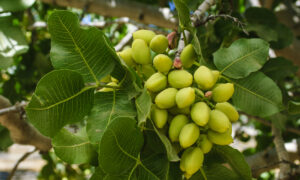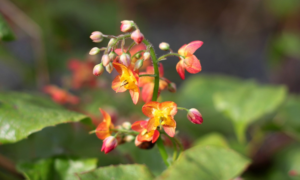We independently research, review, and recommend the best products. If you buy something through our links, we may earn a commission. Learn more.
Most people are immediately struck by the Sago Palm’s otherworldly appearance when they first see one up close. I certainly was. The symmetrical ring of feathery fronds reminded me of something from a prehistoric era—and for a very good reason. Little did I know, the Sago Palm is a living fossil, a cycad that has remained unchanged for millions of years.
Despite its common name, the Sago Palm (Cycas revoluta) isn’t technically a palm tree. These low-growing plants with long green fronds come from ancient tropical and subtropical species that usually grow from a non-branching trunk. They produce nuts, but unlike true palms, they don’t flower or fruit.
As you’re here, I assume you want to know a few things about how to grow, care, and get the most from a Sago Palm? In that case, let’s get into the thick of it.
Contents
Understanding the Sago Palm’s growth habits
When grown in the garden, Sago Palms should be planted in the early spring or late autumn. These plants are incredibly slow-growing, gaining only a few inches annually—so be mindful that they may only produce one new frond each year. Its feather-like foliage grows out in a symmetrical ring.
Generally, they grow larger when planted in the ground versus when they’re in containers. After several years, they may reach 2 to 3 feet. You’ll need to stick tend the plant for over 50 years if you want your Sago Palm to reach its 10 feet potential! This makes the Sago Palm a perfect candidate for bonsai enthusiasts who love the challenge of growing miniature trees.
Choosing the right environment
Because the Sago Palm is a tropical plant, it prefers a warm and humid environment. It appreciates full or partial sun exposure, but you should avoid placing it in direct sunlight as it can damage the foliage. The afternoon sun can wilt and burn the foliage in the summertime, and too much shade can result in sparse leaves and an unhealthy plant. So, it’s about finding a balance.
Choose a bright east-, west-, or south-facing window when grown indoors. Indoor plants can be moved outside in warm weather if the container is in dappled sunlight. If you live in an area with harsh winters, keep your Sago Palm in a container and bring it inside when the mercury drops.
Soil and watering
Sago Palms aren’t overly picky about their soil, as long as they have good drainage. A sandy soil rich in organic matter and slightly acidic to neutral soil pH is ideal. A potting mix made for cacti or palms should be suitable for container plants.
When it comes to watering, Sago Palms have decent drought tolerance but prefer a moderate amount of moisture in the soil. Water whenever the soil feels dry to the touch, making sure never to overwater. Slightly reduce watering in the winter when the plant isn’t actively growing.
Temperature and humidity
The Sago Palm loves warm, humid conditions but is also sensitive to temperature fluctuations. It can briefly tolerate cold temperatures, but frost can damage the foliage, and temperatures below 23 degrees Fahrenheit will likely kill the plant. When grown indoors, we recommend protecting your Sago Palm from drafts and airflow emitted from heating.
Fertilising and maintenance
Fertilise your Sago Palm monthly throughout the growing season (spring to autumn) with a liquid fertiliser, using an 18-8-18 ratio (nitrogen-phosphorus-potassium), mixed according to the package directions. You can also use slow-release fertiliser two to three times during the growing season.
Common pests and diseases
The Sago Palm is susceptible to a few common pests and diseases, such as mealybugs, spider mites, and scale insects. You can control these with insecticides or by wiping the leaves with soapy water. Root rot, which can occur if the soil is too wet, can be treated by allowing the soil to dry out. Make sure to remove any affected parts of the plant.
Is Sago Palm Toxic?
Yes, the Sago Palm is a highly poisonous plant, so you’ll need to proceed with caution around pets if you plan to pot yours indoors. Watch out if you own cats or dogs, as the fronds, seeds, bark, and offshoots can cause fatal injuries if ingested. That goes for any small children too, so it’s best to keep your Sago Palm out of reach.
The last word
The Sago Palm is undoubtedly a conversation starter, boasting ancient origins and an unusual, prehistoric appearance. But, as with all plants, it requires special care and attention to thrive. By understanding its growth habits and choosing the right environment, you can enjoy the Sago Palm’s beauty for many years to come. Just don’t expect it to grow fast!






